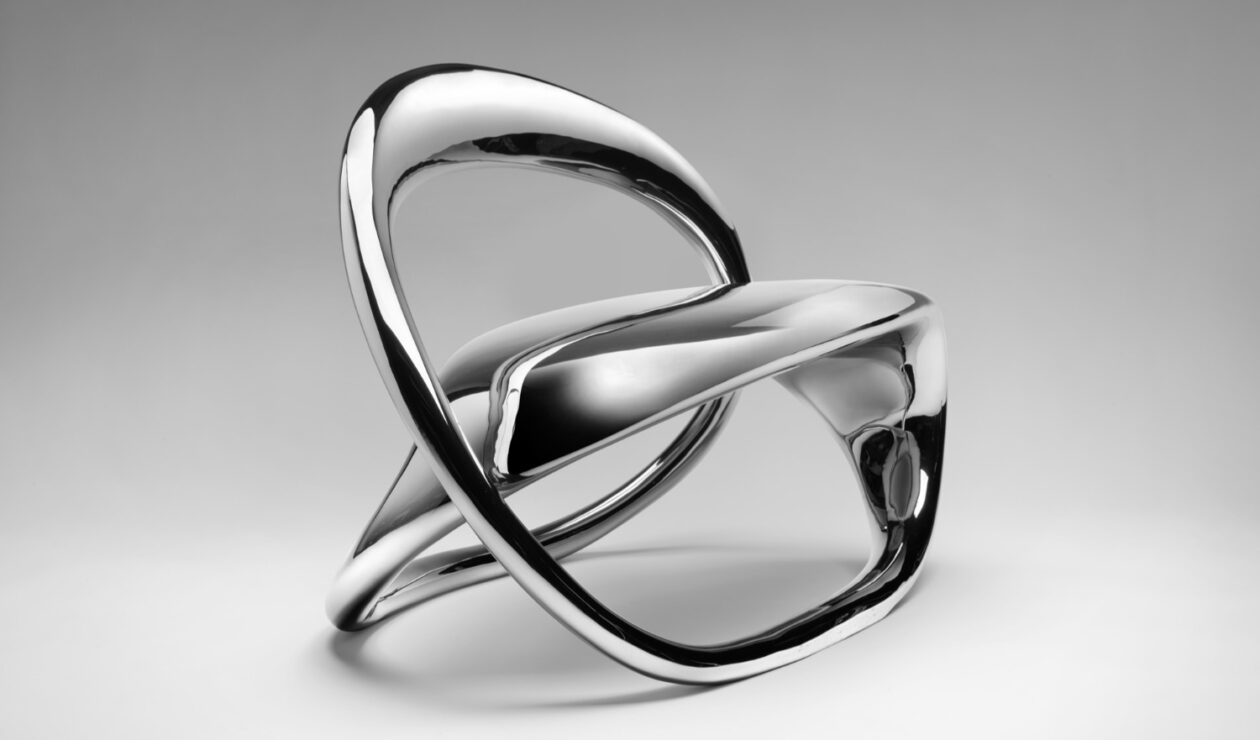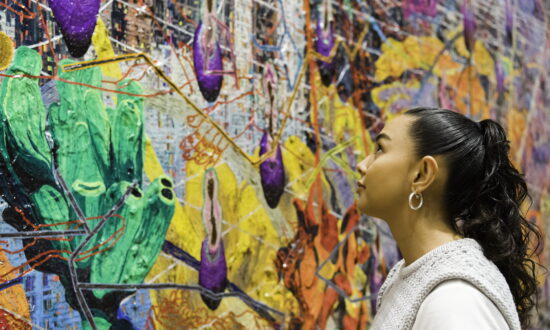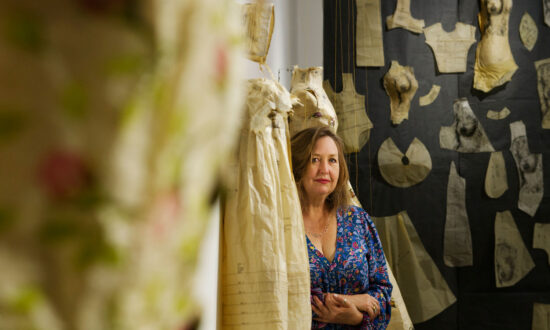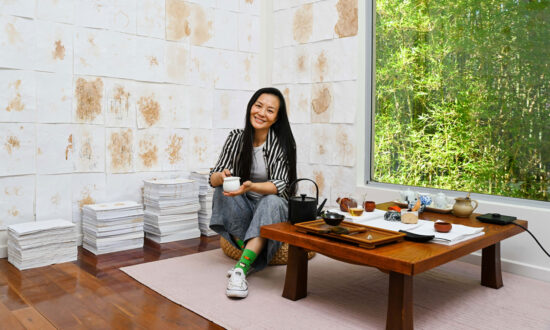Visitors to the Art Gallery of South Australia will be familiar with the Gallery’s internationally significant collection of contemporary furniture. From Marc Newson’s iconic LC1,1986 to Jon Goulder’s exquisitely crafted Broached Goulder chaise lounge, 2019-20, the Melrose Wing is full of wonderfully iconic forms and innovative techniques in contemporary design.
An intriguing new form was recently added to the gallery’s permanent collection: a chair by the Australian-born, now London-based designer Brodie Neill (b. 1979). With sinuous, curved lines, this striking new acquisition, is made of mirror-polished recycled, waste stainless steel.
Constructed like a Möbius loop, it is made in the form of a ‘@’ character – a ubiquitous symbol of contemporary life, representative of mass, fast-paced digital communication. Perhaps designed for its sculptural qualities, rather than comfort, this chair is an ode to this iconic symbol in three-dimensions, an emblem of our time.
Brodie Neill (b. 1979) is a Tasmanian-born, London-based designer working primarily in contemporary furniture. Having first encountered the traditions of woodworking through his grandfather’s carpentry tools, Neill has long employed his natural curiosity of the world and problem-solving skills to produce innovative contemporary furniture.
Working with a framework with what he calls a ‘material consciousness’, Neill’s practice seeks a deep understanding of materiality and process in the quest to eliminate waste and reduced the environmental impact of his work. His design practice is deeply embedded in the concept of ‘circular design’, a process that seeks to eliminate waste and circulate and re-use existing, often ‘waste’ material in the production of new design.
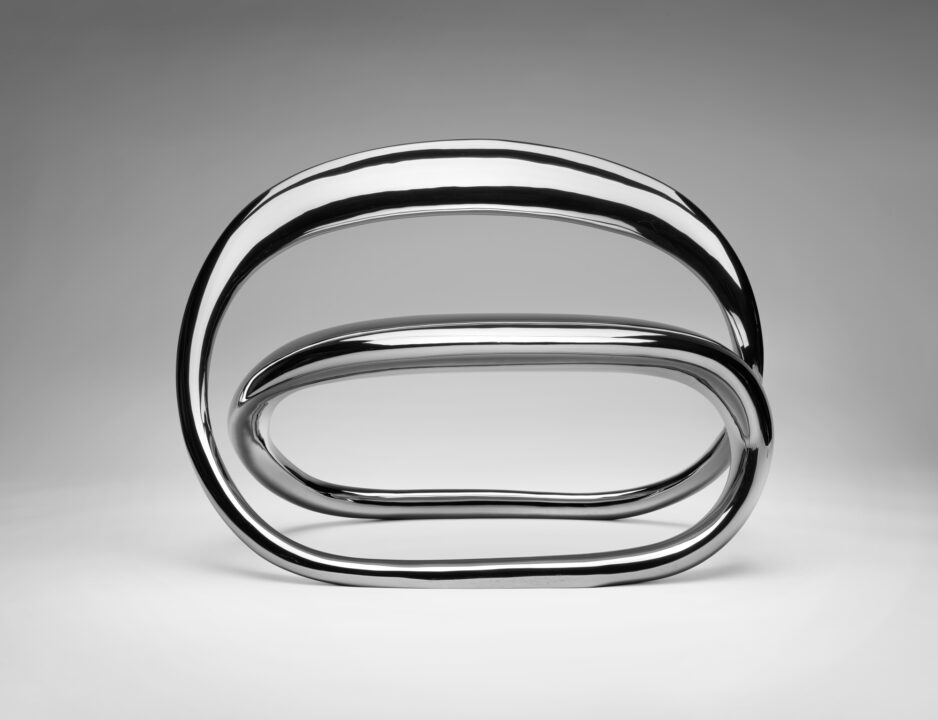
Brodie Neill, designer, born Hobart 1979, @Chair,2022, London,stainless steel; Prudence Lee Bequest 2023, Art Gallery of South Australia, Adelaide, © Brodie Neill
The @Chair was first produced as a rendered design in 2008 and included in Time Magazine’s the Design 100 list in the same year. At the time Neill was unable to find a process to produce the chair, which met his eco-conscious approach to design. He says, “the forward-thinking configuration couldn’t be produced via traditional manufacturing techniques, so it’s been a long quest to find the perfect method that distilled the object with a strong sense of craft yet also technology, a common fusion within my work. Several state-of-the-art processes were explored, including CNC milling from a solid block of aluminium, though this presented large amounts of waste for a design whose form proclaims material efficiency and overall refinement…. Stainless steel emerged as the ideal material, not only due to its high-performance surface but due to its malleability and sense of fluidity within a ridged entity.”*
In 2016, Neill represented Australia at the inaugural London Design Biennale, Sommerset House, London with his Plastic Effects installation, which used ocean plastic waste to produce contemporary furniture.
Neill has long advocated for the re-use of plastic waste. His ongoing ‘ocean terrazzo’ project (2006-) uses plastic fragments found by beach clean-up groups and coastal-care organisations across the world. The fragments are re-bonded into a speckled, kaleidoscope pattern on table-top forms. The use of plastic fragments in Neill’s practice, discarded by humans across the world, references the power of ocean currents and powerfully demonstrates the ultimate connectivity of the natural world.
Neill studied at the University of Tasmania before completing a Masters of Furniture Design at the Rhode Island School of Design, United State of America. In 2006, he established his studio in London’s East End. His work is held in the permanent collections around the world.
His @Chair will features in an upcoming re-hang of the Melrose Wing of International art, looking at the art historical concepts of metamorphosis, transformation, and forms in flux.

Get InReview in your inbox – free each Saturday. Local arts and culture – covered.
Thanks for signing up to the InReview newsletter.
Brodie Neill’s @Chair can be seen in Gallery 16 from Friday November 3, 2023.
Rebecca Evans is curator of decorative arts & design at AGSA. This article is part of InReview’s Off the Wall series, in which AGSA curators offer an insight into specific works or displays at the gallery.
Support local arts journalism
Your support will help us continue the important work of InReview in publishing free professional journalism that celebrates, interrogates and amplifies arts and culture in South Australia.
Donate Here
